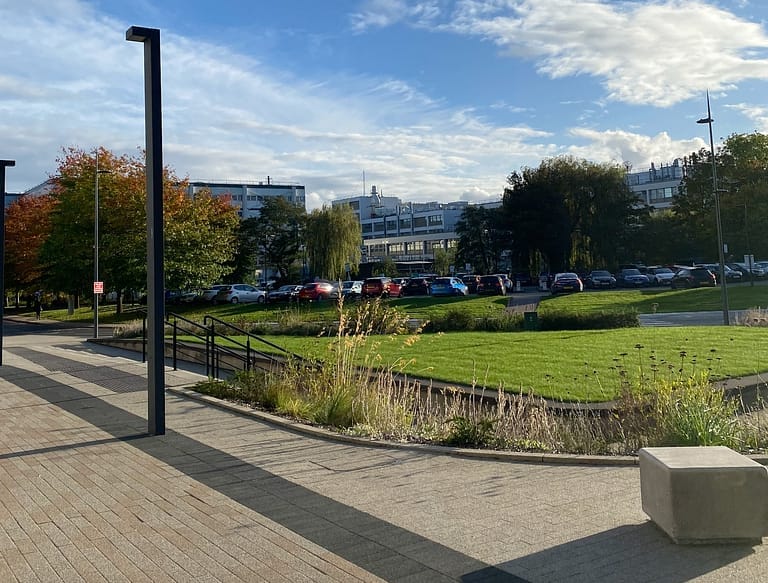
Today, I’ll be talking to you guys about the factors I considered when developing my study style. Just a disclaimer though; like a lot of things in university, this is a very subjective topic. So the way I approach things may not necessarily work the same way for me as it did for you.
Finding your ideal study style is difficult. Truth be told, it is a lot of trial and error until you find the routine that suits your habits. Even after two years at university, I sometimes still need to tweak my approach to things depending on the content. So without further ado, here are a few factors that helped me find my personal study routine. I hope these factors are something you consider in the future as well!
Location

An underrated one, this one. The location of studying was a factor that I didn’t appreciate enough until I actually moved to the UK. Prior to that, my desk in Malaysia accommodated me greatly. It was sizeable, comfortable (but not too comfortable!), and a good place for me to study effectively. My room in the UK, however, could not have been more different. For one, it was small. It was tiny to the point where if I pulled out my chair to try, the back of the chair would grind against the bed-frame. The fact that I was so close to my bed was a grim reminder of my perpetual readiness to take a nap.
The location which you study has to suit your needs, and people’s criteria vary. For example, I need a place that isn’t humongous, but big enough for me to set up my materials and belongings. Where possible, I find a space that’s sufficient enough to accommodate two or three people should I want to study in a group. Having a space that’s not too big creates an atmosphere that feels private which is the kind of atmosphere I need for study. I’m extremely fortunate that such a space exists for me – it’s a small university building on the edge of campus. It’s quite the walk away from central campus, so it’s like my tiny corner on campus designated for study.
Study Groups (Go Solo or Flock Together?)

Study groups are another preferential consideration, and in my case often situational. For the most part, I prefer studying alone, plugged into my music, and tackling my work in solitude. If the concept of discussing these ideas in a group setting helps with your own learning appeals to you, then it’s highly likely that you would thrive in a bigger study group. In my case, I like to look at the materials first and then jot down all the ideas or takeaways I get from the content before I think about discussing it with anybody else.
There are situations, like an essay which is an inherently individual task, where I like to go through it alone. This includes even the planning or brainstorming stages of it. Sure, I do like to briefly exchange ideas with course-mates outside the allocated study time. But during the study time itself, I like to go through materials alone. I think that deducing the relevant information for myself before consulting others is a key part of who I am as a learner. So to deviate from that norm would greatly hinder my personal progress.
This is also why I find it harder to study with closer friends. The possibility of me getting distracted from my study goals is definitely higher. So in situations where I do find myself studying with others, I bizarrely find it more effective to study with people I know, but not too well. In this instance, I find it more effective to study with friends who either don’t do my degree or who do my degree (honestly, I don’t have a lot of course friends, and the two of the three that I do know, I know for a fact will distract me.)
Note Taking: Study Smart, Not Hard

Now, to get into the nitty-gritty stuff. Note-taking is the baseline of my study routine and where all aforementioned aspects comes together. I prefer note-taking individually prior to discussion. I need a comfortable but work-appropriate location to take my notes. Because unless I have a super-computer for a brain, I have to actually remember the content and apply it accordingly rather than just regurgitate info.
This is where there is a lot of rinse and repeat, experimenting with what works for you and what doesn’t. I’ve experimented and tinkered with the way I’ve taken notes numerous times because come the first year of university, I realised there was more to note-taking than merely brute-forcing notes through copying Powerpoint and textbook content word for word. Unfortunately, that was my previous model of studying was. I merely copied all the information showcased and hoped some miraculous osmosis of knowledge would happen.
Looking in retrospect, what worked best for me was to highlight key concepts and reframe them in a certain way. I would reframe these concepts to try and ask why they were important. Why did I highlight this? What gives this piece of info more relevance than other things on the slides or pages? And since I like processing information in bite-size chunks, I would write a small summary sheet of the content if I had the time (and energy) to do so, condensing them from four pages of content to two succinct pages of summarised key information. Subsequently, this made it much easier for revision for end of semester or end of year assignments.
The process of compressing this information would happen on paper, as writing it physically also helped me remember things with more clarity.
Study Techniques
The ‘Study Smart, Not Hard’ motto also applies to me when I use study techniques. However, this is a topic I can’t say too much on because using study techniques is quite a new thing for me. Only very recently have I begun integrating the Pomodoro study technique into my routine. A rather well-known study technique, where instead of studying in large 2-hour windows, you try to study in short 30-minute windows with breaks sandwiched in between.
This technique allows me to digest information more incrementally as opposed to trying to process it in one large chunk. Also, as a rather lackadaisical guy myself, I do appreciate those short windows of freedom. For techniques like this, apps can really come in handy. When trying to use this technique, I use an app called “Focus Plant”, which I have discussed in a much earlier post. You can use similar apps such as “Study Bunny” or “Flora” to help perform such functions too.
By entering a “session” on the app, you not only try to get as much work done in the allocated time slot, but the capacity for distraction is reduced greatly. Logging out of a “session” (via using any other app on your phone) can cause you to restart the session. This, I guess for me, is some kind of psychological incentive. This is because this kind of thing preys on my mind, for I don’t like leaving work related things half-done. Honestly, I should carry this mentality across more aspects of my life too. These focus apps are a great way ensure that you not only meet your study goals, but ward off distractions.
Thanks for Reading!
And there we have it, folks. The factors I considered as the fundamental building blocks of my existing study routine. A study routine isn’t completely set and is flexible to change. Because at the end of the day, there may very well be content that requires a different approach. But the overarching point I hoped to get across was that in order to find your personalized routine, you have to experiment and see what doesn’t work for you first before finding something that does. And to do that, you need to think about what factors affect your study habits, even down to seemingly trivial things like comfort and atmosphere.
So that’ll be all from me for now. Hope to write to you guys again sometime soon 🙂
– Khal


Leave a Reply